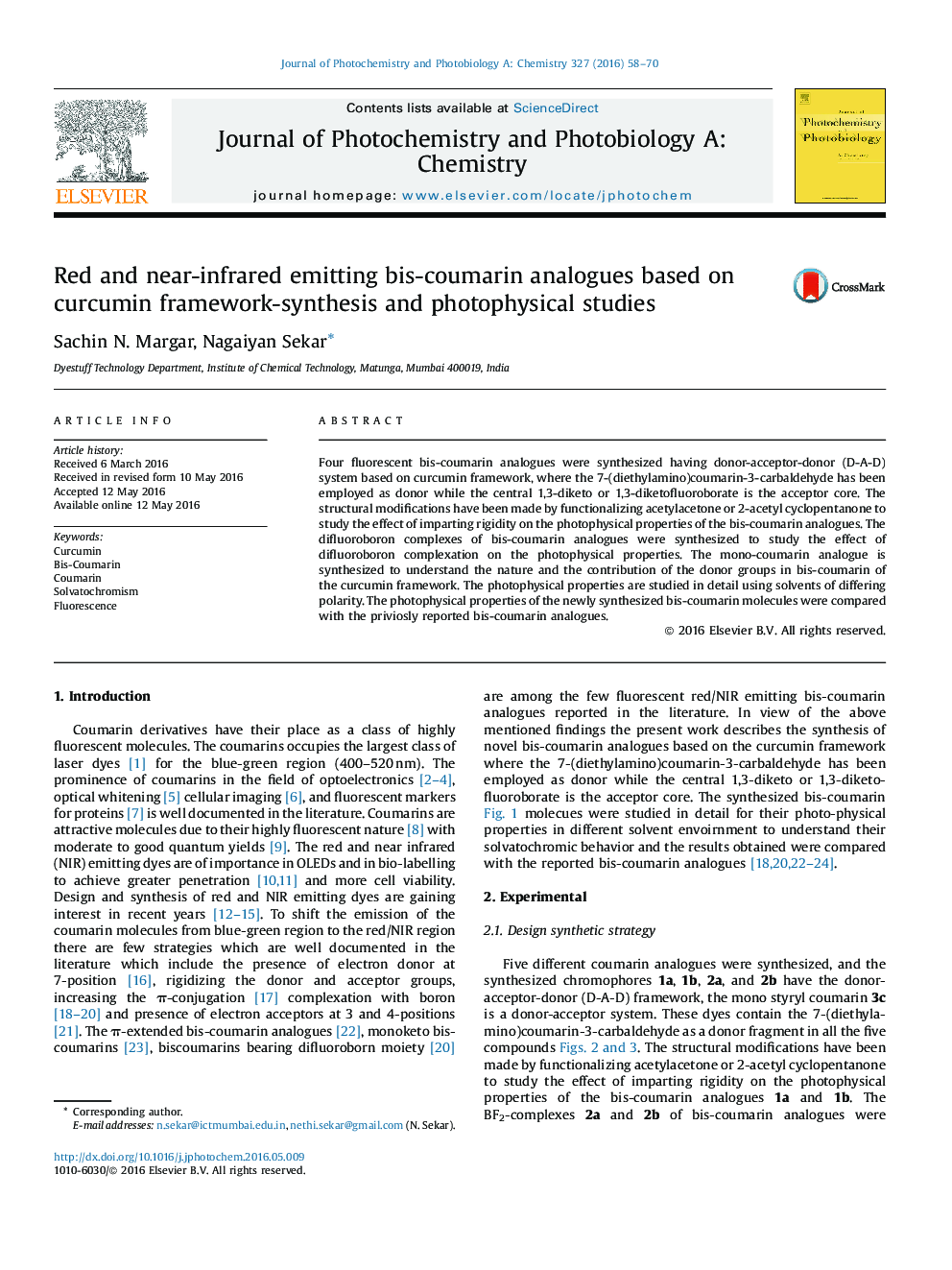| Article ID | Journal | Published Year | Pages | File Type |
|---|---|---|---|---|
| 26099 | Journal of Photochemistry and Photobiology A: Chemistry | 2016 | 13 Pages |
•Red and Near Infra-Red (NIR) emitting bis-coumarin analogues.•The synthesized molecules are based on curcumin framework.•Photophysical properties are studied in different microenvironments.•Solvatochromic study based on solvent polarity functions.
Four fluorescent bis-coumarin analogues were synthesized having donor-acceptor-donor (D-A-D) system based on curcumin framework, where the 7-(diethylamino)coumarin-3-carbaldehyde has been employed as donor while the central 1,3-diketo or 1,3-diketofluoroborate is the acceptor core. The structural modifications have been made by functionalizing acetylacetone or 2-acetyl cyclopentanone to study the effect of imparting rigidity on the photophysical properties of the bis-coumarin analogues. The difluoroboron complexes of bis-coumarin analogues were synthesized to study the effect of difluoroboron complexation on the photophysical properties. The mono-coumarin analogue is synthesized to understand the nature and the contribution of the donor groups in bis-coumarin of the curcumin framework. The photophysical properties are studied in detail using solvents of differing polarity. The photophysical properties of the newly synthesized bis-coumarin molecules were compared with the priviosly reported bis-coumarin analogues.
Graphical abstractFigure optionsDownload full-size imageDownload as PowerPoint slide
